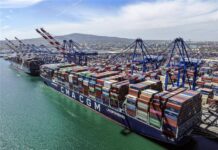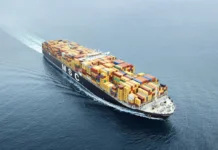
Ukraine’s maritime trade has been profoundly affected by the Russian invasion, transitioning from a competitive regional player to one facing near-total disruption of its main seaports.
The reliance on alternative, smaller ports has provided only a partial solution, while global shipping and food security have felt the ripple effects.
Ukraine’s maritime trade was heavily reliant on its Black Sea ports, primarily Odesa, Chornomorsk, and Pivdennyi. According to the UNCTAD Review of Maritime Transport, these ports served as critical hubs for the export of grain, metals, and industrial products, with grains accounting for a significant portion of the traffic.
In 2021, Ukraine exported around 50 million tons of grain, with most of these shipments passing through the Black Sea ports.
Ukraine’s containerized traffic also played an essential role in its trade ecosystem, though bulk shipping dominated the maritime trade.
Ukrainian ports had developed strong connections with European and Mediterranean hubs, and overall port performance was competitive regionally, although political tensions with Russia post-2014 had caused a decline in volumes.
Prior to the conflict, Ukraine’s maritime network had relatively stable performance, despite the impact of the 2014 annexation of Crimea, which caused a 14% drop in container throughput.
The full-scale invasion of Ukraine in 2022 had a devastating impact on the maritime trade and port operations. Key Black Sea ports were blockaded or damaged, halting the vast majority of maritime trade. Port calls in Ukraine dropped sharply, falling from an average of 60 weekly port calls to nearly zero by mid-2022, as the UN mentions in a report dedicated to Ukrainian maritime trade.
While some alternative routes were found through smaller Danube River ports like Reni and Izmail, they could not compensate for the lost capacity of major Black Sea ports.
Regional ports in Romania and Bulgaria saw an uptick in traffic as a result of the rerouting, according to Commercial Shipping Review by Allianz. Additionally, the war’s impact extended to global supply chains, with the disruption of Ukrainian grain exports causing price increases.
Despite these setbacks, there was a slight uptick in 2023 and 2024, driven by rerouting through the Cape of Good Hope and increased demand for ships due to longer transit times, according to BIMCO report.
However, Ukrainian container trade remains severely restricted, and recovery hinges on the reopening of its Black Sea ports, which is unlikely to occur until the conflict subsides.
In terms of connectivity, the key container ports of Ukraine seem to have faced drastic severe disruptions in its operations due to the war, leading to significant losses in connectivity and throughput.

More specifically, Chornomorsk experienced a 67.3% decrease in port connectivity between Q2 and Q3 of 2021 and 2024, while, Odesa saw a significant drop in connectivity, with a 93.6% decrease from Q2 2021 to Q2 2024, and an 85.6% decrease from Q3 2021 to Q3 2024.
As for the port of Yuzhny there are no data for 2024, which suggests its connectivity might have dropped to negligible levels or is no longer being reported.
These drastic reductions align with the reports, indicating severe disruptions which have not allowed not even a relative recovery of the Ukrainian port operations.





